Recipe: Original Sifnos Chickpea Stew (Revithada) in a...
The signature dish of the island...
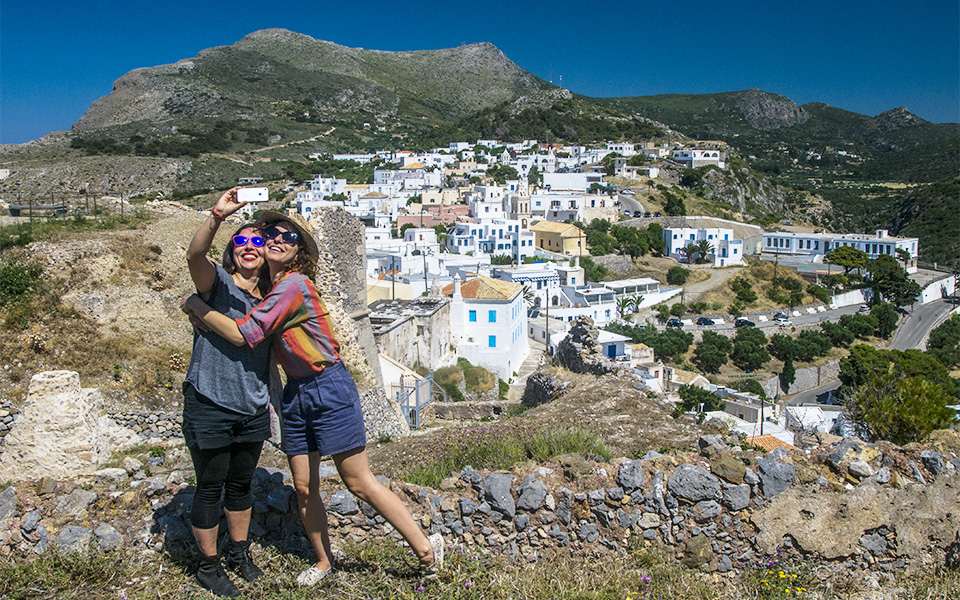
Tourists take a selfie with Kythira's Chora as a backdrop
© Clairy Moustafellou
Kythira has long had an air of romance attached to it. It is evident in the myths of the birth of Aphrodite off the coast of the island; it can be seen in cultural references to the island, such as the 18th century painting by Jean Antoine Watteau “Pilgrimage to Cythera” depicting cherubs flitting around besotted couples against a lush, idyllic backdrop.
They say that when traveling, each person brings their own personal perception. On Kythira I didn’t see the romantic island that I had in mind, but a land that was down-to-earth, agricultural and green – a place that reminded me of the Cretan countryside, with a plethora of villages, each with its own distinct character. Some are incredibly beautiful, while others are so quiet that not even a prowling cat disturbs the stillness.
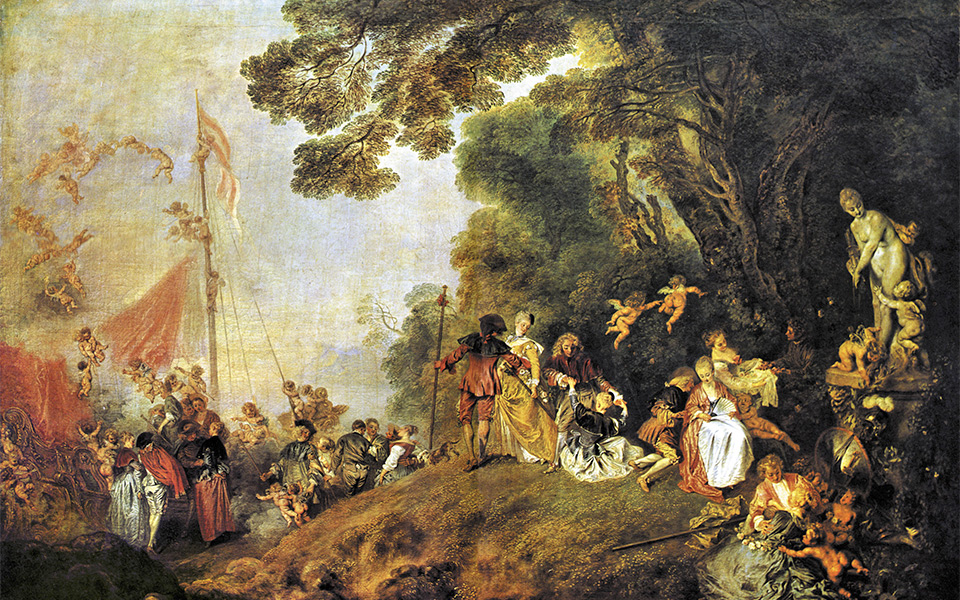
Jean Antoine Watteau's “Pilgrimage to Cythera”
I also discovered that it is one of the most interesting islands that I have ever visited, with a rather confused sense of identity: it is located off the south coast of the Peloponnese, is considered to be one of the Heptanese islands of the Ionian and administratively belongs to the Region of Attica.
Interestingly, the island also has a unique framework regarding public lands: thanks to a system inherited from the onetime British rulers, whatever land is not private belongs to the “Enchoria Periousia” (meaning “Domestic Wealth”). This means that the central government has no claim over non-private lands, monasteries or nearby islets; instead these are controlled by a committee that represents the local residents.
According to the painter Manolis Charos, a permanent resident, of Kythira, this has meant that each village was able to maintain its own distinct character. Unlike in much of Greece, illicit building has been kept to a minimum as non-private expanses do not belong to the Greek state in general but directly to the local population Kythirans. As such any illegal building would be met with a severe local response.
Aside from maintaining their traditional characters, it appears that Kythira’s villages have also often been resistant to large changes in their populations. “The same families always inhabit the same villages. The Sklavos family has lived in Mitata since the age of pirates. The Zervos family has been in Mylopotamos since 1300. Kythira was never one community, it was North and South” Charos says, an claim many other locals confirm.
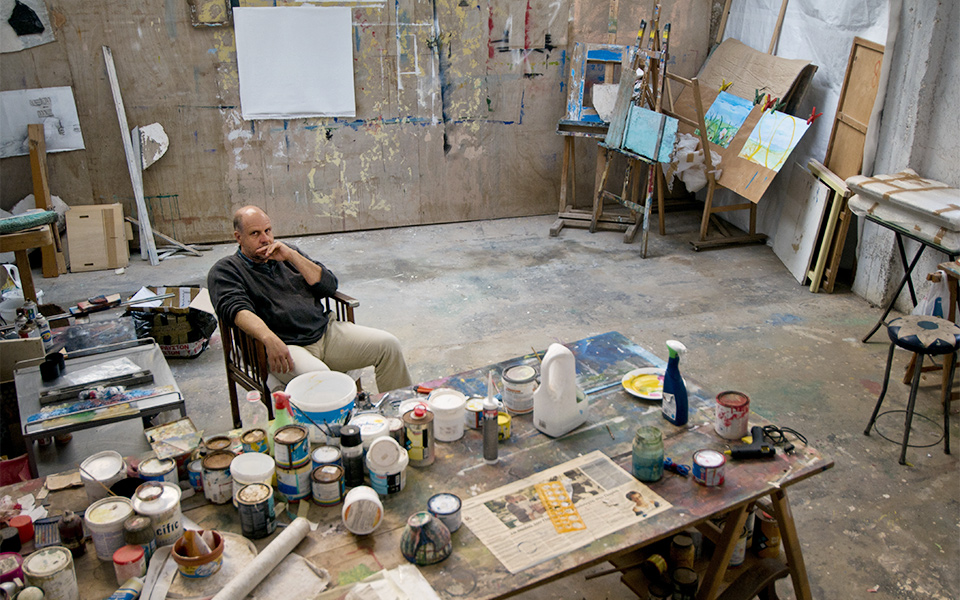
The Kythiran artist Manolis Charos
© Clairy Moustafellou
Beyond that, Kythira also appears to enchant outsiders, many of whom have abandoned their former lives to move to the island. Our hotel is owned by a Frenchman, we meet a herbal-therapist who is is Italian-Scottish, an artist originally form Athens and many others over the course of our three-day stay who have made Kythira their home.
What else does should a visitor know about this multifaceted island? Two things. The first is that the points of interest are not in one area but scattered about (eg. the Chora is 25km from Diakofti, the island’s port, a roughly a 40 minute drive away) so to get around Kythira you need to bring / rent a car. The second is that, unlike other destinations in the south of Greece, Kythira has a short tourism season. If you want the hubbub of high season come in August; if you prefer quiet serenity opt for other months.
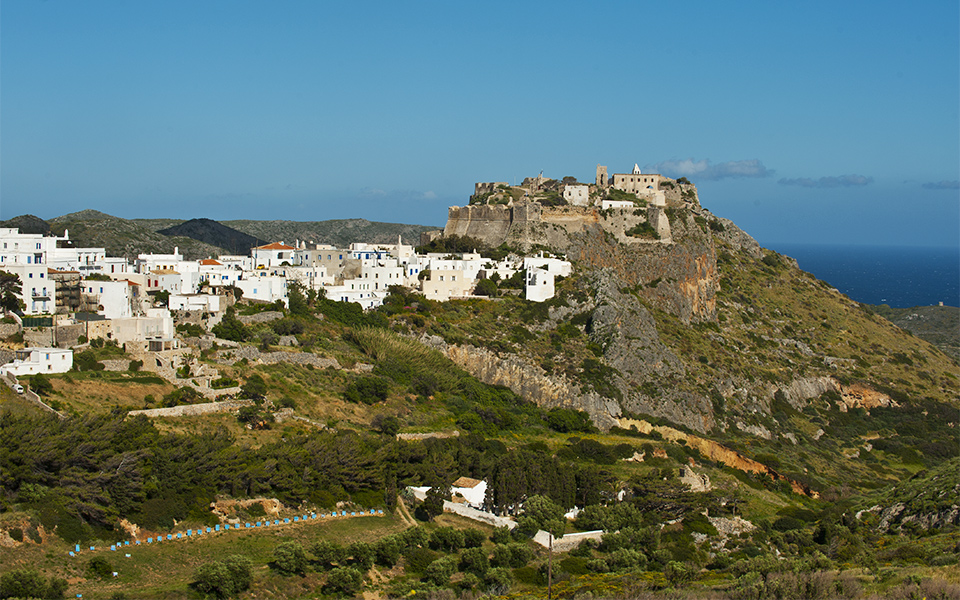
Kythira's Chora and castle
© Clairy Moustafellou
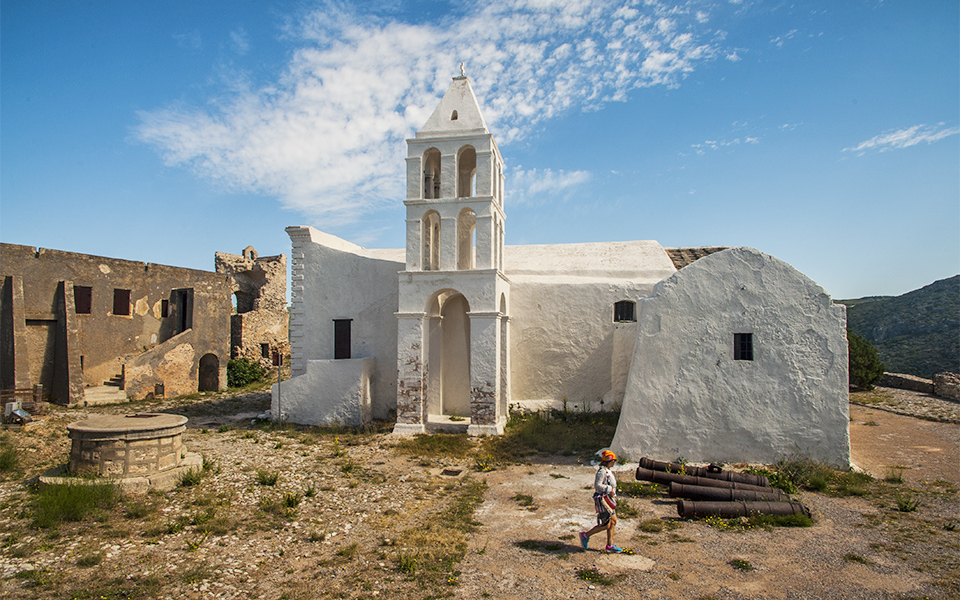
Make the climb to the castle above Chora on Kythira to admire the old buildings and take in the stunning views
© Clairy Moustafellou
Kythira resembles the neighboring Peloponnese in having plenty of castles. These include Paliochora (the onetime capital of Kythira that was sacked by the Ottoman pirate Hayreddin Barbarossa), Mylopotamos (a Venetian castle full of charming ruins), the 16th century ‘Kastelo’ of Avlemona and, of course, the Castle of Kythira (aka Fortetsa) in Chora, a 13th century Venetian fort that was rebuilt in the 16th century and is one of the island’s best sights with stunning views.
One of the most notable features of the last, is an exhibition of the coats of arms of the island’s various noble families. It may be small but the explanatory texts shed light on the island’s history and the powerful families that arrived from Crete in the Middle Ages.
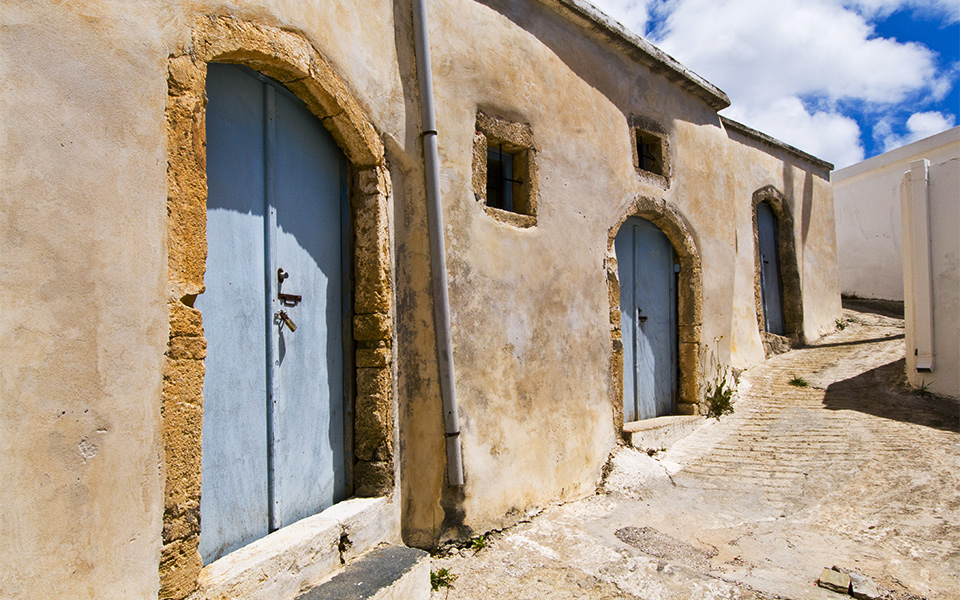
© Clairy Moustafellou
“Up to here… No further,” one tourist says to his wife a short distance before reaching the Castle of Kythira, out of breath from the (not particularly demanding) uphill route. But even the spot the tourist stopped to catch his breath is worth exploring, because right there, a short distance away from the castle’s gate, are two houses across from one another – one white and one pink – that form part of the town’s history.
As one can read on the plaques outside, the pink house belonged to the family of Roza Kasimati, the mother of Yakumo Koizumi (aka Lafcadio Hearn), a Greek-Irish writer who spent part of his life in Japan, fell in love with the country and wrote several great books about it. Across the narrow street, the white house once belonged to Nikolay Filosofov, a Russian admiral who lived a turbulent life and who fled Russia and the Bolsheviks with his family following the October Revolution. He ended up a lighthouse-keeper on the nearby island of Antikythera. And so a small alley just outside the castle gates proves to be unexpectedly cosmopolitan.
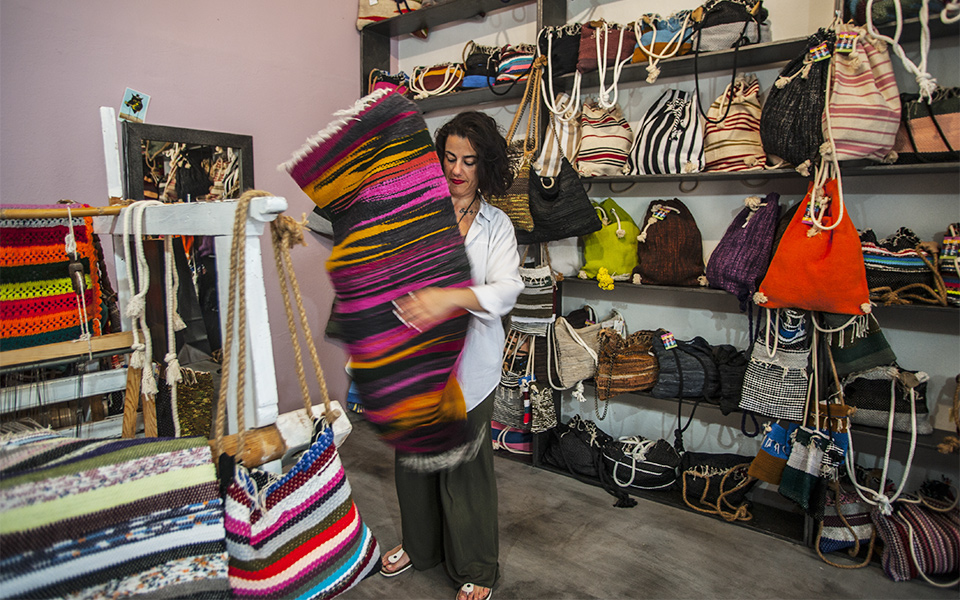
Kyriaki makes bags and other items by hand using an old family loom.
© Clairy Moustafellou
“When my husband and I had the idea of making a bag from kourelou [a multicolored knitted fabric traditionally made from leftover scraps] he said to me ‘I’d like to see you convince one woman to carry it.’” The result? “I managed it,” Kyriaki Kalligerou tells us.
She is a new-generation weaver who creates bags using an ancient family loom made from old wood salvaged from a beach. In her colorful shop in Chora, you will find handmade bags made from kourelou, leather and even sheep’s wool (which is processed by her grandmother and dyed by her mother in large barrels).
You can also purchase handmade “non-flammable and waterproof” bandes – i.e. wall tapestries that many put in front of fireplaces as there is no danger of them catching fire. In one corner of the shop you will also see the most vital piece of the whole operation: the loom.
Borse Yfanda Tel. (+30) 698.090.6058
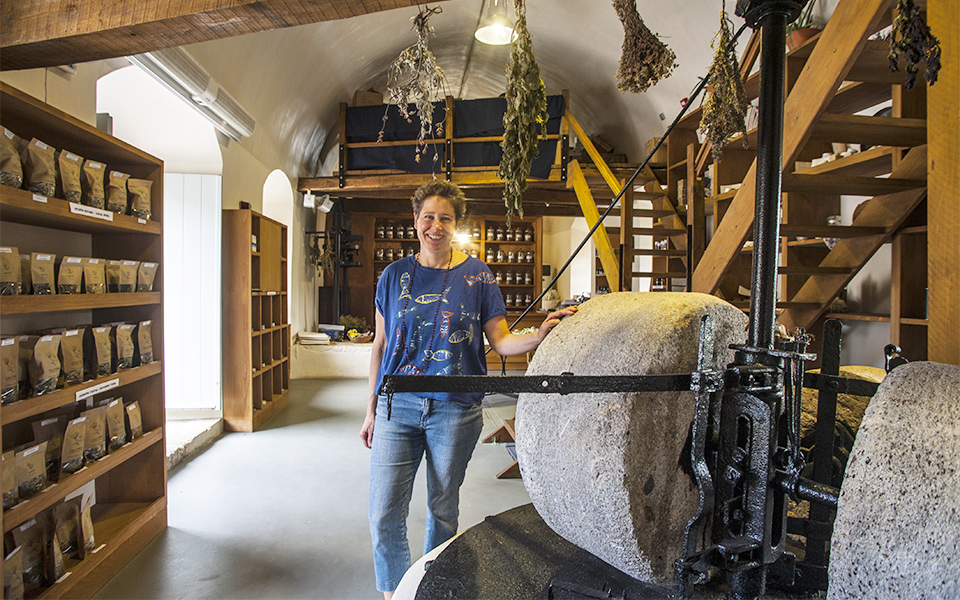
Elichrysos in Mylopotamos is housed in an old olive press and sells a range of natural products that make great gifts.
© Clairy Moustafellou
On the island you will find all manner of shops selling every manner of souvenirs: fridge magnets, jewelry, mugs, painted stones and bouquets of dried sembrevivas – a dainty indigenous yellow flower that is a hallmark of the island.
Three of the most worthwhile shops to visit on Kythira are Ligo ap’ Ola (Tel. +30 27360.37005) in Chora’s main square, for carrot jam and locally gathered sea salt, Artopoieio tou Karava (Tel. +30 27360.33092) in the village Karavas for its famous rusks and Elichrysos (Tel. +30 27360.33224) which is housed in an old olive press in Mylopotamos and sells organic olive oil, local wines, fatourada (a liquer made from tsipouro, cinnamon, cloves and honey), therapeutic herbs and a variety of natural creams and ointments.
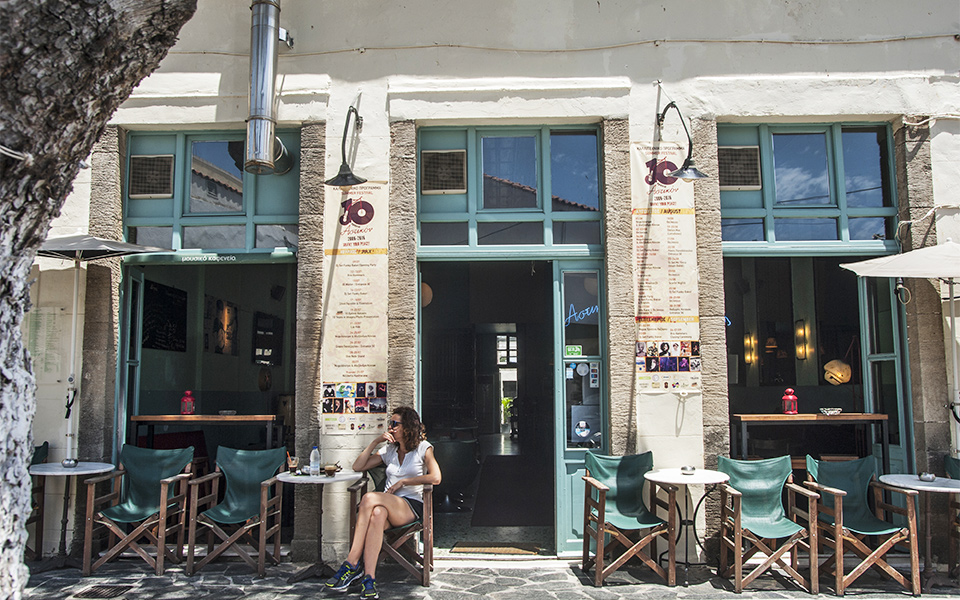
The cafe Astikon in Potamos almost never closes and is a focal point for the community all year round.
© Clairy Moustafellou
“I’m open all year round, almost 24 hours a day. In the middle of winter it might not be 24, it could be 20 or 18. But in the summer it is almost 24.” It is quite moving to visit an old Kythiran village with a cafe that sees it as a matter of duty to keep its doors open winter and summer. The credit goes to Dimitris Kontoleon who originally hails from Piraeus: he left the city and moved permanently to Kythira, (his grandfather was from here) where he opened the music-cafe Astikon (Tel. +30 27360.33141) in the village Potamos.
The establishment is contemporary cafe/restaurant/artspace that also often hosts DJs and live music acts. When you pass by make sure to try the house speciality: homemade lemonade (by itself or with rum, vodka, gin or tequila).
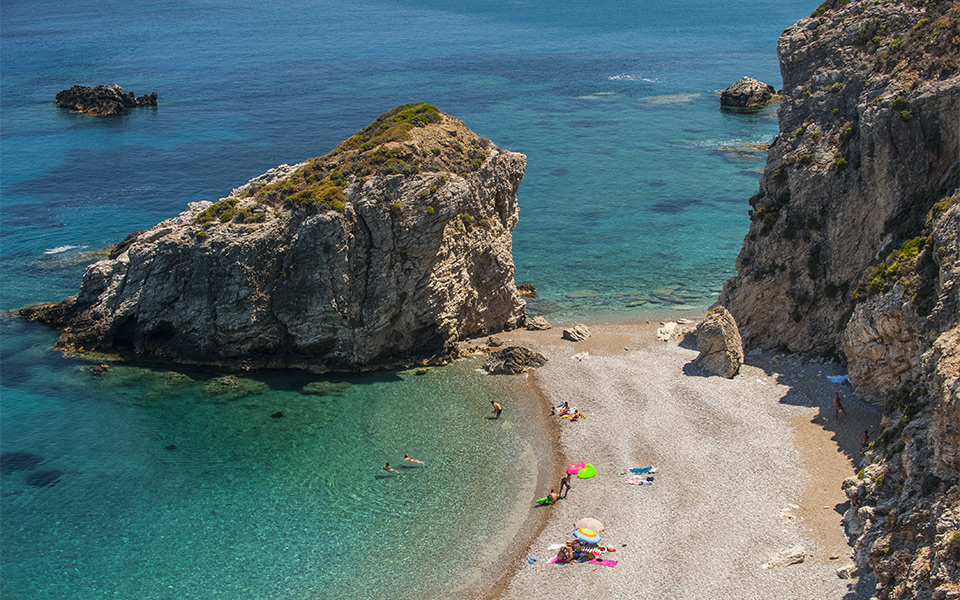
The beach of Kaladi on Kythira
© Clairy Moustafellou
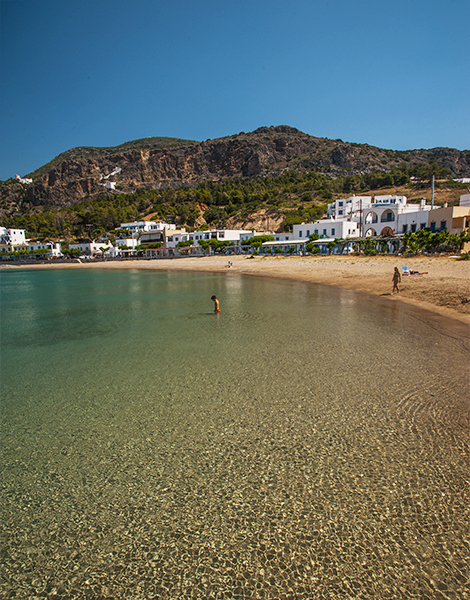
Crystal waters lap the shore in the seaside village of Kapsali
© Clairy Moustafellou
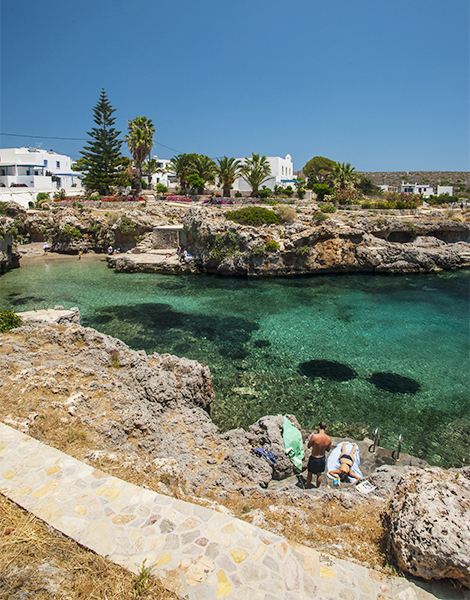
The swimming pool-like waters at Avlemonas
© Clairy Moustafellou
On Kythira you will enjoy plenty of wonderful swimming spots. In Blue Flag awarded Kapsali, the beach is easy to reach, located next to a promenade of shops meaning any necessary supplies and refreshments are always readily available. Avlemonas is similarly easy and family-friendly, featuring a small swimming spot underneath a series of terraces planted with flowers and palm trees where kids and teenagers jump of the rocks into a pool-like bay. Nearby restaurants and cafes provide refreshments and respite from the sun.
It is also worth discovering Kombonada, Halko and, of course, Kaladi – one of the island’s most famous beaches and one whose beauty is more than enough compensation for any trouble you may have tracking down one of the two roads that lead down to it (like we did).
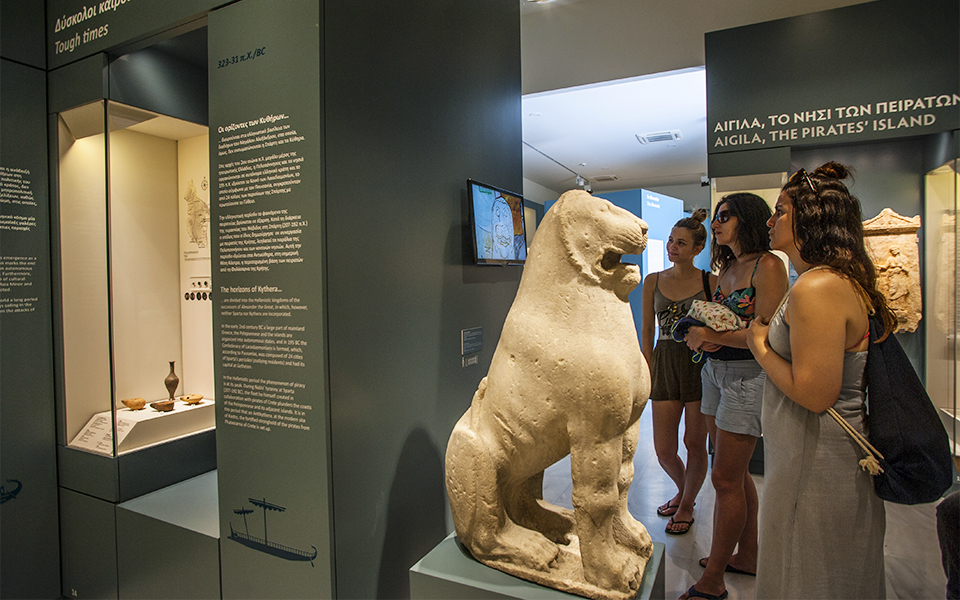
Visitors listen to the ancient lion of Kythira 'narrate' his life story
© Clairy Moustafellou
“Everything began in this small workshop. A big piece of marble, a few tools and the sculptor’s hands. What was he called? I don’t know, I never heard his name. All I remember are his hands.” So says the Lion of Kythira as he lays out his life story and how he ended up in Germany as a “spoil of war” in 1941, and how his marble heart “was close to bursting from the suspense” when he was loaded onto the steam ship in Hamburg that was to bring him home.
The ancient Greek sculpture dates to the end of the 6th century. It was potentially initially created as a funerary monument and in later years was placed in the fort of Chora. Today the lion offers a clever “narration” of his own story in a thoroughly gripping short film that can be seen in the Archaeological Museum, with the original statue on display right next to the screen.
The playful and creative manner in which the statue’s history is laid out is one of the highlights of the excellent Archaeological Museum. Among the many other exhibits, you will also see a beautiful bronze figurine of Athena (500-450 BC) a clay mask of Medusa (5th-4th century BC), bronze jewelry and votive offerings.
Archaeology Museum of Kythira
Tel. (+30) 27360.31739, entry 2 euros,
Open Tuesday-Sunday 08.00-20.00
The signature dish of the island...
Your summer map to Ios: what...
In a summer of soaring prices,...
More and more Europeans retire to...